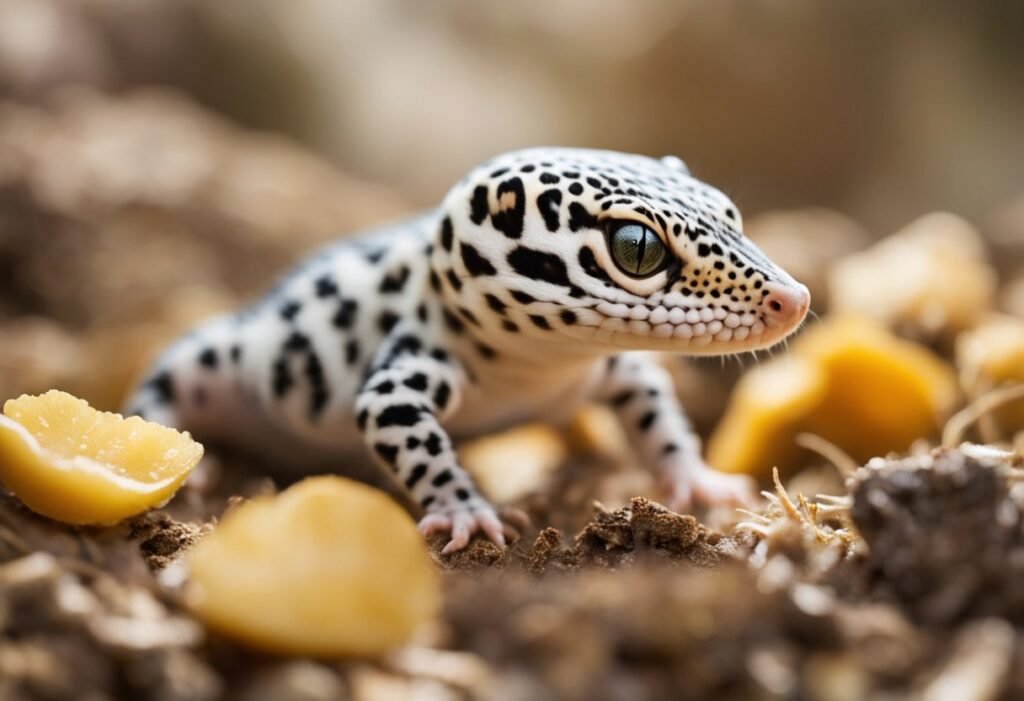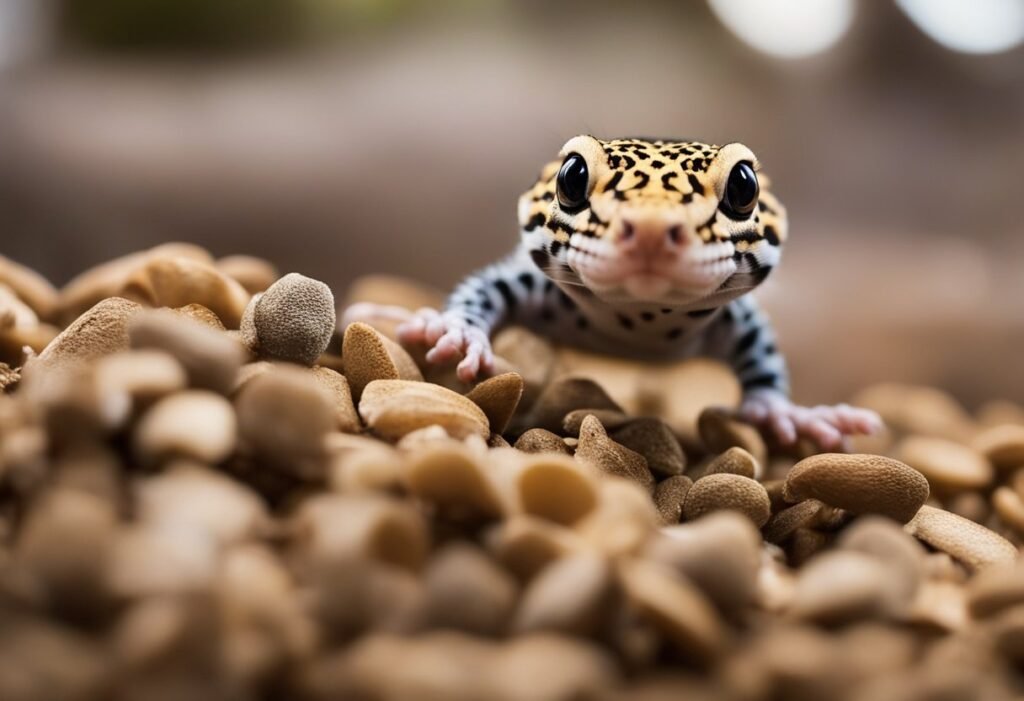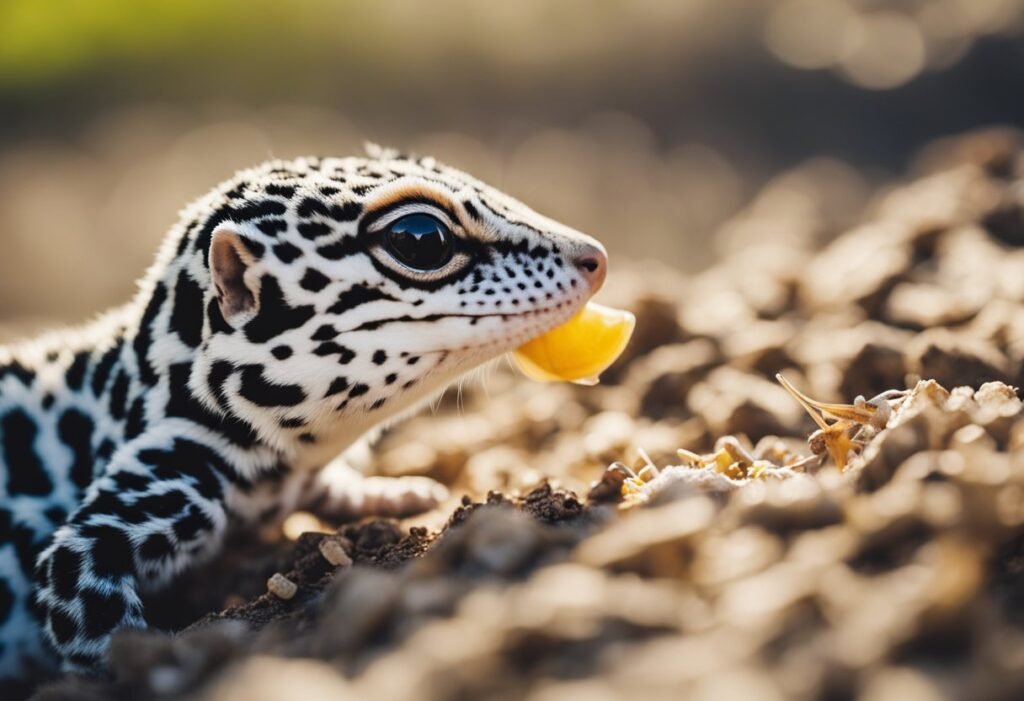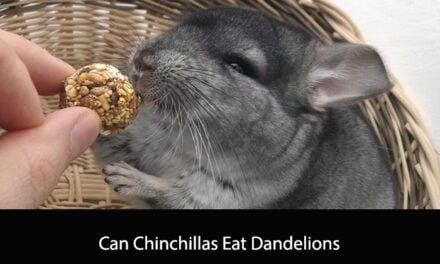Leopard geckos are popular pets that are known for their unique appearance and easy-to-care-for nature. As with any pet, it’s important to provide them with a balanced and appropriate diet. One question that often arises among leopard gecko owners is whether they can feed their pets baby mice. In this article, we’ll explore the answer to this question and provide some important considerations for feeding leopard geckos.
Firstly, it’s important to note that leopard geckos are carnivores and require a diet that is high in protein. In the wild, they primarily eat insects such as crickets, mealworms, and waxworms. However, some owners may consider feeding their geckos baby mice as a source of protein. While it is possible for leopard geckos to eat baby mice, it’s important to understand the potential risks and drawbacks of this feeding option.
Dietary Basics of Leopard Geckos

Leopard geckos are insectivores, which means they primarily eat insects. However, they can also eat small vertebrates like baby mice. In this section, we will discuss the nutritional requirements of leopard geckos and the common prey they consume.
Nutritional Requirements
Leopard geckos require a balanced diet to maintain their health. They need a variety of nutrients, including protein, fat, vitamins, and minerals. In captivity, it is important to provide them with a diet that meets their nutritional needs.
Leopard geckos need a diet that is high in protein. Insects like crickets, mealworms, and dubia roaches are good sources of protein for leopard geckos. They also need a source of fat, which can be found in insects as well as in some commercial gecko diets.
Leopard geckos also require vitamins and minerals to stay healthy. Calcium is particularly important for leopard geckos, as it helps to keep their bones strong. A lack of calcium can lead to metabolic bone disease, which can be fatal. Vitamin D3 is also important, as it helps the gecko absorb calcium.
Common Prey for Leopard Geckos
Leopard geckos in the wild primarily eat insects, but they can also consume small vertebrates like baby mice. In captivity, it is important to provide them with a varied diet that includes a variety of insects.
Some common insects that leopard geckos eat include crickets, mealworms, dubia roaches, waxworms, and superworms. It is important to feed them appropriately sized prey, as prey that is too large can cause health problems.
In conclusion, leopard geckos require a balanced diet that meets their nutritional needs. Insects are their primary food source, but they can also consume small vertebrates like baby mice. As responsible pet owners, it is important to provide them with a varied diet that includes a variety of prey items.
Feeding Practices

Feeding Frequency
When it comes to feeding leopard geckos, it’s important to establish a feeding routine that works for both you and your gecko. We recommend feeding your gecko every 2-3 days. This allows them to digest their food properly and prevents overfeeding, which can lead to obesity and other health issues.
Appropriate Prey Sizes
Leopard geckos are carnivores and require a diet of live prey. Baby mice are a common prey item for leopard geckos, but it’s important to ensure that the size of the mouse is appropriate for your gecko’s size. We recommend feeding prey that is no larger than the width of your gecko’s head.
It’s also important to note that feeding live prey can come with risks, such as the prey biting your gecko or carrying diseases. We recommend purchasing prey from a reputable source and monitoring your gecko during feeding to ensure their safety.
In addition to baby mice, other appropriate prey items for leopard geckos include crickets, mealworms, and dubia roaches. It’s important to provide a varied diet to ensure your gecko receives all the necessary nutrients.
Overall, feeding practices for leopard geckos require careful consideration of prey size and frequency to ensure their health and wellbeing.
Potential Risks of Feeding Baby Mice

When considering feeding leopard geckos, it is important to weigh the potential risks and benefits. One common question that arises is whether leopard geckos can eat baby mice. While this may seem like a natural choice as they are carnivorous animals, there are some potential risks to keep in mind.
Digestive Health Concerns
One major concern when feeding baby mice to leopard geckos is the potential impact on their digestive health. Baby mice have a high fat content and can be difficult for leopard geckos to digest. This can lead to digestive issues such as constipation, diarrhea, and even impaction. Impaction occurs when undigested food builds up in the leopard gecko’s digestive tract, potentially leading to blockages and serious health issues.
Nutritional Imbalance Risks
Another consideration is the potential for nutritional imbalances. While baby mice do provide a good source of protein, they may not provide the necessary balance of nutrients that leopard geckos require. Feeding baby mice exclusively can lead to deficiencies in other important nutrients such as calcium and vitamin D3. This can lead to health issues such as metabolic bone disease.
To minimize the potential risks, it is recommended to feed leopard geckos a balanced diet that includes a variety of insects and other appropriate foods. If you do choose to feed baby mice, it is important to do so in moderation and to ensure that they are appropriately sized for your leopard gecko. Additionally, it is important to monitor your leopard gecko’s health and digestive function closely to ensure that they are not experiencing any negative side effects.
Safe Feeding Alternatives
When it comes to feeding leopard geckos, it’s important to choose safe and nutritious options. While some people may choose to feed their leopard geckos baby mice, there are other alternatives that can provide the necessary nutrients without the risks associated with feeding live prey.
Insect-Based Diet
Leopard geckos are insectivores, meaning they primarily eat insects. Some safe and nutritious options include crickets, mealworms, and waxworms. It’s important to provide a variety of insects to ensure your leopard gecko is getting a balanced diet.
When feeding insects, it’s important to gut-load them with nutritious food before offering them to your leopard gecko. This means feeding the insects a healthy diet before feeding them to your pet. Additionally, you can dust the insects with a calcium supplement to ensure your leopard gecko is getting enough calcium.
Supplementation and Variety
In addition to a variety of insects, it’s important to provide your leopard gecko with a variety of supplements and foods. This can include adding a vitamin supplement to their diet, as well as offering fruits and vegetables as occasional treats.
It’s also important to monitor your leopard gecko’s weight and adjust their diet accordingly. Overfeeding can lead to obesity and other health issues, so it’s important to provide the appropriate amount of food for your pet.
Overall, there are safe and nutritious alternatives to feeding leopard geckos baby mice. By providing a variety of insects, supplements, and foods, you can ensure your pet is getting the nutrients they need to thrive.
Frequently Asked Questions

Is it safe for leopard geckos to consume pinky mice?
Yes, leopard geckos can safely consume pinky mice. In fact, baby mice are a great source of nutrition for leopard geckos, as they are high in protein and fat. However, it is important to ensure that the pinky mice are appropriately sized for your leopard gecko, as consuming prey that is too large can lead to health issues.
What are the dietary implications of feeding baby mice to leopard geckos?
Feeding baby mice to leopard geckos can provide a balanced and nutritious diet, as they are a natural prey item for these reptiles. However, it is important to ensure that the leopard gecko’s diet is varied, and that they are not solely consuming baby mice. A varied diet can help prevent nutritional deficiencies and promote overall health.
How does the consumption of pinky mice affect the health of leopard geckos?
When consumed in appropriate sizes, pinky mice can provide essential nutrients for leopard geckos, such as protein and fat. However, overfeeding or feeding prey that is too large can lead to health issues, such as obesity or digestive problems. It is important to monitor the size and frequency of prey items consumed by your leopard gecko.
Can feeding baby mice to leopard geckos occur in a captive environment?
Yes, feeding baby mice to leopard geckos can occur in a captive environment. However, it is important to ensure that the pinky mice are appropriately sourced and prepared, and that the leopard gecko’s diet is varied and balanced.
What natural prey items do leopard geckos eat in the wild?
In the wild, leopard geckos primarily consume insects, such as crickets, mealworms, and roaches. However, they may also consume small rodents, such as mice or lizards.
Are there any risks associated with leopard geckos eating small rodents?
There are potential risks associated with leopard geckos consuming small rodents, such as choking or digestive issues. It is important to ensure that prey items are appropriately sized and that the leopard gecko’s diet is varied and balanced. Additionally, it is important to source prey items from reputable sources to ensure they are free from harmful chemicals or diseases.





